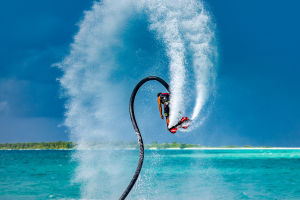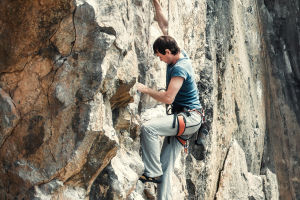Imagine soaring through the sky with nothing but the wind beneath you! Wingsuit flying, also called wingsuiting, is an extreme sport that lets humans glide like birds or flying squirrels.
Using a special jumpsuit that connects fabric between the arms and legs, we can control our movement through the air, turning the dream of human flight into reality.
While it looks magical, this sport combines thrill with high risk. It’s not something we can casually try without preparation and training, but for those who embrace it, the feeling of flying is unmatched.
How Wingsuits Work
A wingsuit works by creating extra surface area between our limbs, which generates lift and allows us to glide instead of just falling. By adjusting the position of our arms, legs, and body, we can steer, gain speed, or slow down mid-air. Modern wingsuits are designed for stability and control, letting flyers cover long distances or perform precise aerial maneuvers. Every small adjustment of the body affects the flight, making it both a physical and mental challenge. Essentially, our body becomes the aircraft, responding to air currents and gravity in a delicate balance.
Types of Wingsuits
There are generally two main types of wingsuits: birdman suits and squirrel suits. Birdman suits have a slightly larger wingspan, providing more lift and speed, making them suitable for longer flights. Squirrel suits, on the other hand, are built for agility, allowing sharper turns and better control over the glide. Some wingsuits include extra flaps or membranes for fine-tuning flight dynamics. Whether we choose a birdman or squirrel suit, each type lets us experience flight in a unique way, offering different sensations and challenges.
Powered vs. Unpowered Flight
Wingsuiting can be powered or unpowered. Powered wingsuits include small engines or propulsion devices that extend flight time and allow us to cover more distance. Unpowered wingsuits rely entirely on our body movements and gravity to glide, requiring more skill and precise control. Both types demand attention to technique, safety, and preparation. Even the most experienced flyers must respect the risks—there’s no shortcut to mastering control in the air.
Launching and Landing
To start a wingsuit flight, we need a high launch point, such as mountains, cliffs, or planes. From there, we jump, spread our wings, and glide through the air, controlling every movement. Eventually, we deploy a parachute to land safely. The parachute acts as a backup, making the final descent manageable and controlled. Choosing the right launch and landing spots is critical; without proper planning, even a small mistake can become serious. This combination of skill, timing, and judgment makes wingsuit flying both challenging and rewarding.
The Thrill and Risks
Wingsuit flying is widely recognized as one of the most dangerous extreme sports. Globally, there are only around 600 active wingsuit flyers. In Lauterbrunnen, Switzerland, a famous wingsuit hotspot, at least 28 people have died attempting flights, and the number continues to rise. The thrill comes with serious risk.
Preparation, training, and constant awareness of surroundings are essential for survival. Yet for those who love adventure, the danger is part of the appeal. It’s a reminder that we can experience incredible freedom only when we respect the forces around us.
Why We Fly
So why do we do it? Wingsuit flying gives an unparalleled feeling of freedom. Gliding over mountains, valleys, and coastlines feels like pure flight. It’s not just speed or adrenaline; it’s the art of moving through the air, tuning our body with air currents, and feeling every twist and turn. The connection with nature, combined with the rush of wind, makes wingsuiting addictive for adventurers. It reminds us that we can push our limits while appreciating the beauty and power of the natural world.
Getting Started Safely
For those curious about wingsuit flying, starting safely is key. We usually begin with skydiving experience, gradually learning parachute control and freefall techniques. Only after sufficient training do we transition to wingsuits. Choosing the right equipment, attending lessons with experienced instructors, and understanding the risks are essential steps. It’s a process that requires patience, but it ensures we enjoy the thrill without unnecessary danger.
The Ultimate Flight
Lykkers, wingsuit flying isn’t for everyone, but for those who pursue it, it’s the ultimate flight experience. From precise suit design to careful launch and landing, every detail counts. Seeing flyers in action is awe-inspiring, reminding us how human courage and skill can turn the dream of flying into reality. For anyone fascinated by the sky, wingsuit flying represents the ultimate adventure—a way to feel completely free, challenged, and alive.
Wingsuit Flight - straight & steep line
Video by Dom.e Wingsuit


